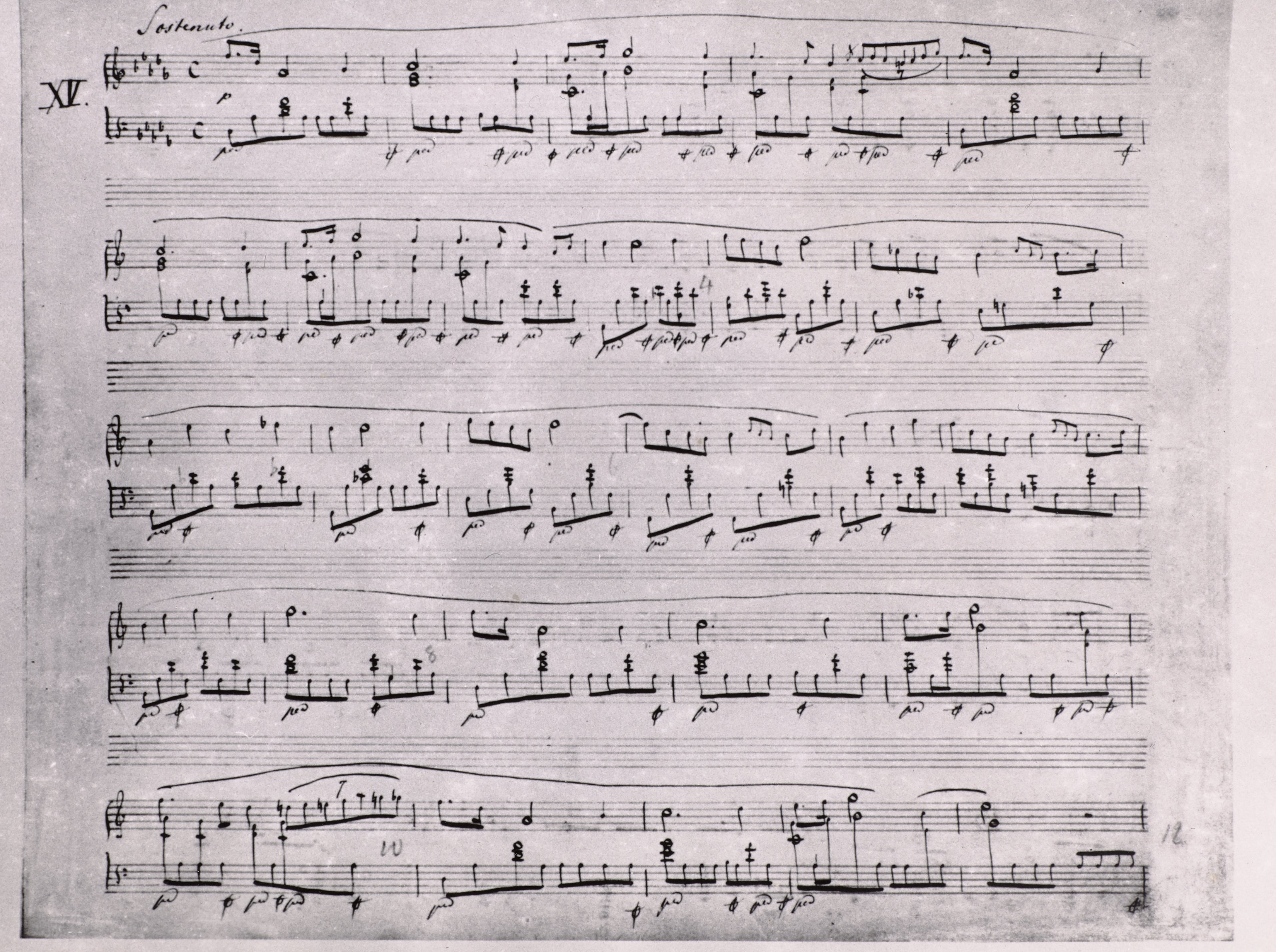Op. 2, Variations in B♭ major
Op. 10, 12 Etudes
Op. 11, Concerto in E minor
Op. 21, Concerto in F minor
Op. 22, Polonaise in E♭ major
Op. 24, 4 Mazurkas
Op. 25, 12 Etudes
Op. 26, 2 Polonaises
Op. 27, 2 Nocturnes
Op. 28, 24 Preludes
Op. 30, 4 Mazurkas
Op. 35, Sonata in B♭ minor
Op. 50, 3 Mazurkas
Op. 63, 3 Mazurkas
Op. 64, 3 Waltzes
(Op. 4), Sonata in C minor




Op. 28 No. 15, Prelude in D♭ major
The change of quavers to semiquavers introduced by EE is right, as far as the rules of rhythmic notation are concerned. However, according to Chopin, the seemingly wrong original notation was most probably aimed at a calm, slightly slower performance of this figure. The same applies to b. 23.
See also b. 79 as well as the Prelude No. 18 in F Minor, b. 12, the Concerto in F Minor, Op. 21, 1st mov., b. 93 or the Nocturnes, Op. 9: No. 1 in B Minor, b. 73 and No. 2 in E
Minor, b. 73 and No. 2 in E Major, b. 16.
Major, b. 16.
Compare the passage in the sources »
category imprint: Differences between sources
issues: EE revisions
notation: Rhythm

